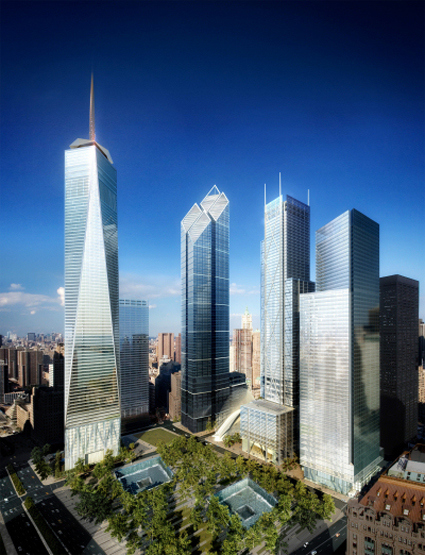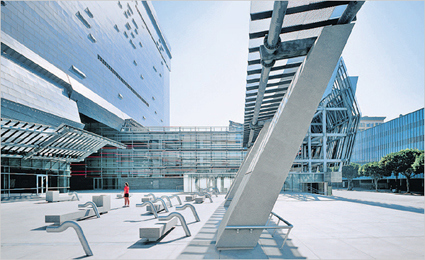The Berlin Wall was a potent symbol crystallizing the divided world of “us” versus “them”. It is stark, monumental, and it gives “protection” to the people from the foes on the other side of the wall (whether you’re the West or the Soviets). The wall came down in 1989, and some predicted a world with less boundaries.
That was not quite the case, and the 911 incident would forever entrench this. Instead of fearing the opposite world power, the fear has shifted to agents of asymmetrical warfare – terrorists. And in place to replace the Berlin Wall are many more little Berlin Walls – various architecture against the newer forms of perceived threats. And, instead of being pure functional and direct in its form and purpose, these new securities are dressed up in disguises.

The Freedom Tower (above) may attempt to symbolize the American resilience after the 911, but the insecurity (or to some, being prepared) is betrayed by the 20-story windowless, fortified concrete base. Innocently decorated with prismatic glass panels, it masks paranoia as design/architecture. After hundreds of years, we’ve still not moved much beyond moats and castle walls it seems. While bollards, planters and various other implementation are still used – often these security features are masked as public benches, sculptures and the like.

Seems like the owners of the Caltrans District 7 building cares a lot about its occupants – littering the plaza with sculptures and benches – but their real purpose is to deter any large vehicles that may be carrying explosives into the building. Apart from terrorists, building and urban space planners are also increasingly targeting other “threats” like skateboarders and the homeless.
It’s a pity that while we connect and link more on the Internet, the physical space seems to revert to the “protect-my-turf” mentality. While we build walls – numerous visible and invisible ones – against others to keep “them” out, from their perspective we’re simply locking ourselves in.
[read more: NYTimes “Design Strikes a Defensive Posture“, Excellent blog on Architectures of Control]

